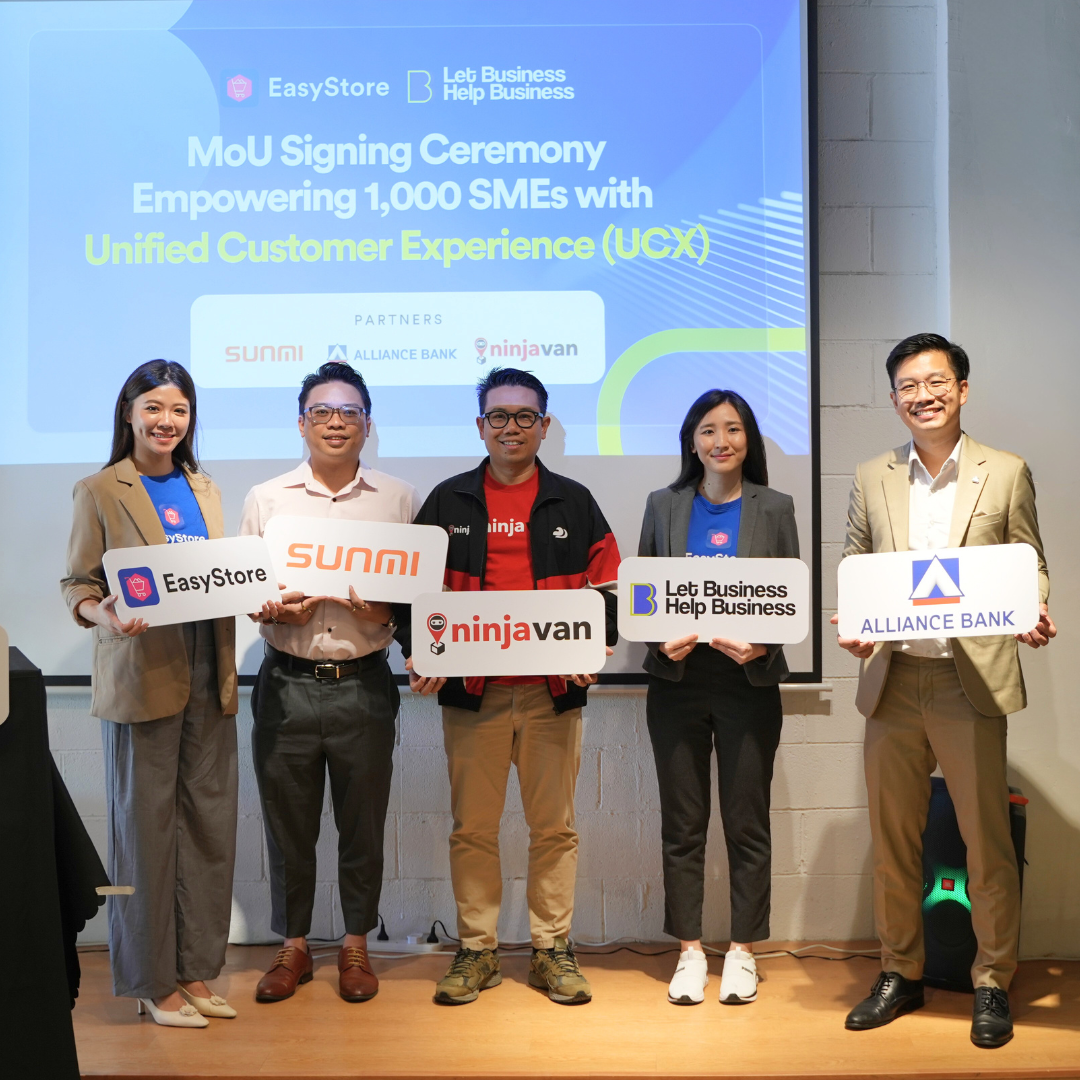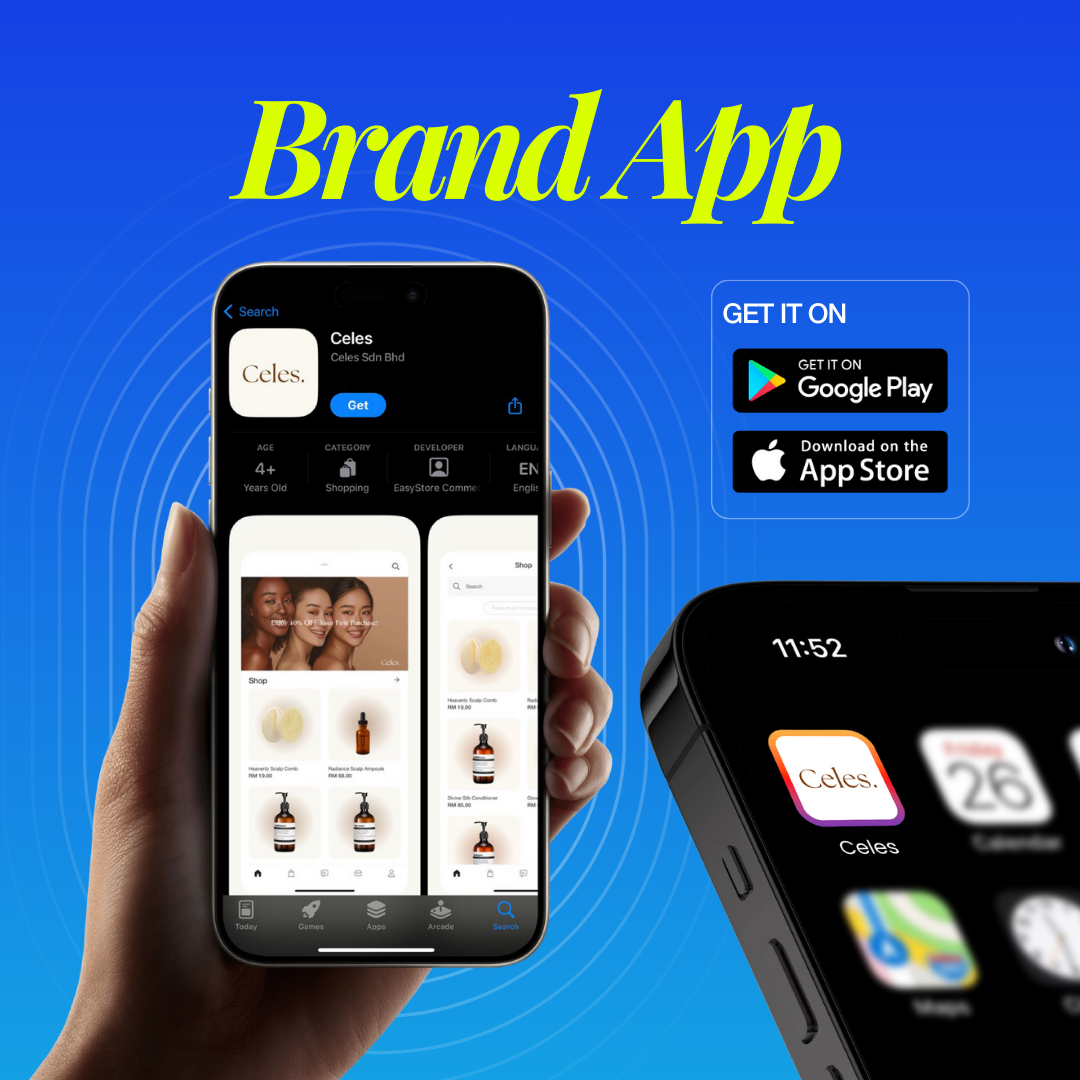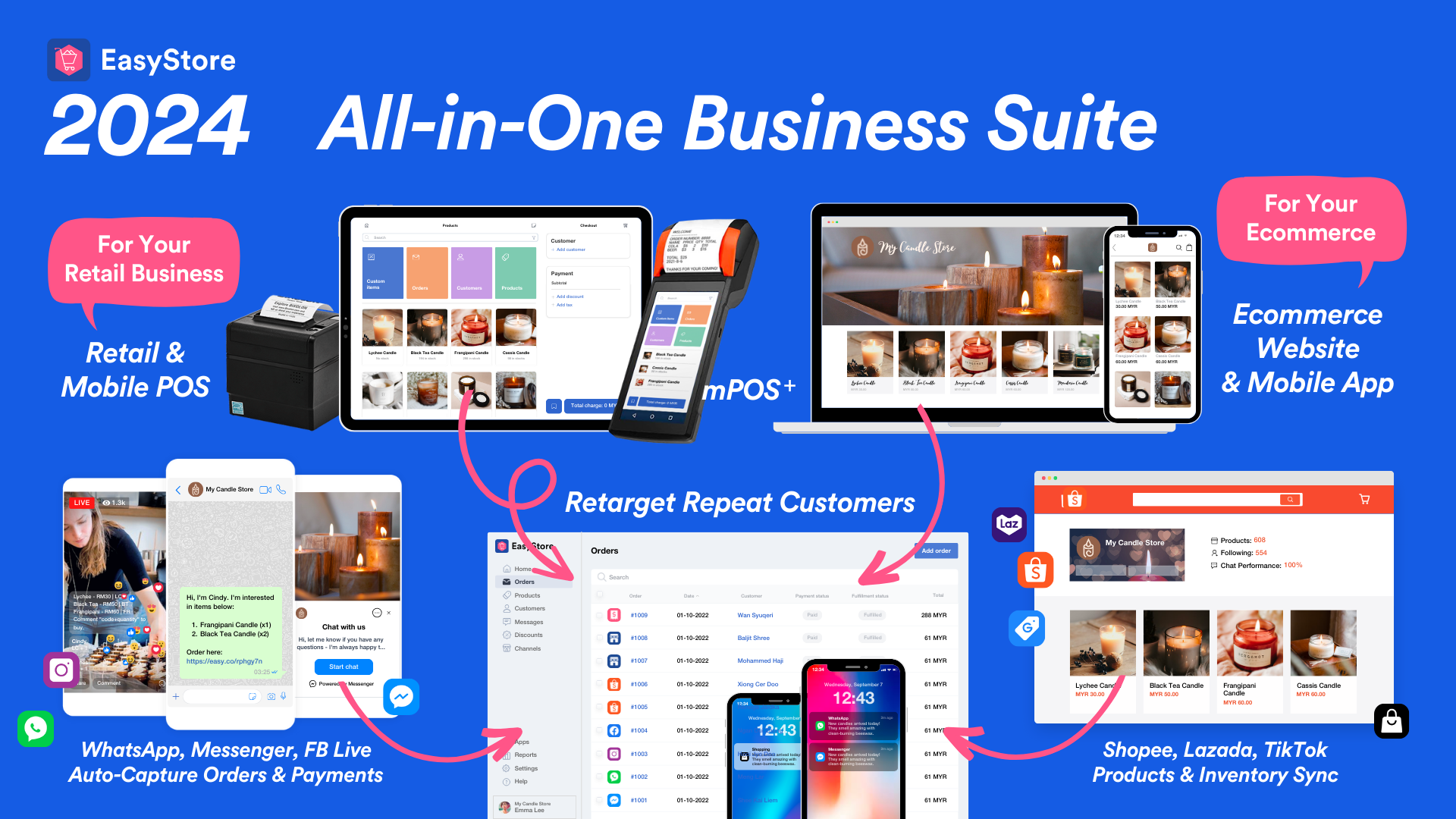4 Actionable Strategies For Retailers To Reduce CAC in 2024
By Kelie Wong · 16th January, 2024

Every sale is a victory, but as a retailer, it's crucial to not just celebrate the win but also understand the underlying dynamics that contribute to your success.
One key factor that deserves your attention is the Customer Acquisition Cost (CAC). Knowing how much it costs you to acquire each customer is not just a metric; it's a strategic insight that can make or break your profitability.
In this guide, we'll unravel the layers of CAC and offer insights tailored for retailers, spotlighting strategies that align seamlessly with the capabilities of EasyStore.
What is Customer Acquisition Cost?

Cost of Acquisition (CAC) is the total investment a business makes to acquire a new customer. It encompasses marketing, sales, and technological expenses associated with turning a lead into a loyal customer.
Calculating CAC involves dividing the total costs associated with acquiring customers within a specific period by the number of customers acquired during that same timeframe. The formula for CAC is as follows:

What's included in CAC?
- Marketing expenses: Costs related to advertising, promotions, and other marketing activities.
- Sales expenses: Costs associated with the sales team, including salaries, commissions, and bonuses.
- Technology costs: Expenses for tools and platforms used in the customer acquisition process.
- Overhead: Other indirect costs linked to customer acquisition efforts.
Lowering CAC is in the company's best interest, as it directly translates to improved profit margins, a competitive advantage in the market, and sustainable business growth.
Regularly reassessing CAC allows businesses to refine their strategies, optimize spending, and make informed decisions to enhance the efficiency of their customer acquisition processes.
4 Proven Strategies For Retailers To Reduce CAC
To reduce CAC, retailers should consider strategies that focus on reducing the cost of sales and marketing or maximizing the returns on these costs. The ultimate goal is to increase the number of new customers acquired while using the least cost to attract and retain them.
1. Decode Customer Needs
Understanding customer needs is fundamental to creating effective and targeted marketing strategies.
By aligning marketing efforts with the actual needs and preferences of the target audience, businesses can optimize their resources, improve customer engagement, and ultimately reduce the cost of acquiring and retaining customers.
This customer-centric approach is key to achieving a more efficient and cost-effective Customer Acquisition Cost (CAC). Start by:
Customer Profiling: Develop detailed customer personas to understand demographics, behaviors, and preferences.
Surveys and Feedback: Conduct surveys or gather feedback to directly inquire about customer needs and expectations.
Data Analysis: Utilize data analytics tools to extract insights from customer behavior and purchasing patterns.
Competitor Analysis: Analyze competitors to identify gaps in the market and understand what customers value.
Social Listening: Monitor social media and online conversations to gain real-time insights into customer sentiments and preferences.
2. Increase Average Order Value (AOV)
By motivating customers to elevate their spending in each transaction, thereby boosting Average Order Value (AOV), businesses can efficiently maximize revenue from existing customers.
This heightened revenue serves as a valuable resource to offset the expenses linked with acquiring new customers, consequently reducing Customer Acquisition Cost (CAC). Here are some additional strategies to increase AOV:
- Bundle Deals: Create enticing bundle offers, encouraging customers to purchase complementary products at a discounted price when bought together.
- Membership Program: Institute a unified membership program where customers earn points for each purchase, incentivizing them to spend more to unlock exclusive rewards.
- Limited-Time Promotions: Introduce time-sensitive promotions or discounts for higher order values, compelling customers to add more items to their carts to benefit from the offer.
- Cross-Selling and Up-Selling: Implement strategic product recommendations and upsell complementary or upgraded items during the checkout process to prompt customers to increase their spending.
3. Put Effort Into Organic Growth
Investing in organic growth is a strategic, long-term approach aimed at building authority, a robust database, and an expanding customer base. By prioritizing organic strategies, businesses can reduce dependency on costly advertising and foster sustainable growth. Key tactics include:
- Word-of-Mouth Marketing: Encourage satisfied customers to become advocates, facilitating organic growth through positive recommendations and referrals.
- SEO (Search Engine Optimization): Optimize online content and web presence to enhance visibility on search engines, increase organic traffic and brand awareness.
- Content Creation: Leverage popular platforms like TikTok for engaging content, including videos and live sessions, to connect with audiences and drive organic interest.
- Keyword Research: Conduct thorough keyword research to identify high-volume terms relevant to your business, improving search engine rankings and attracting organic traffic.
4. Automate Repeating and Low-Return Tasks
Implementing automation through integrated marketing and Customer Relationship Management (CRM) tools is a strategic move to streamline operations and enhance efficiency. 87% consumers are more likely to shop with retailers that use technology to enhance the unified customer experience (UCX).
Automation significantly reduces human resource costs by handling repetitive tasks, allowing staff to focus on more complex and strategic activities. Some examples include:
- Omnichannel Workflow Streamlining: Combine online and offline operations seamlessly, ensuring a more synchronized and efficient approach to customer interactions.
- Personalized Marketing: Leverage automation to deliver personalized marketing messages, ensuring a tailored and timely approach to customer engagement including scheduled broadcast messages and automated EDMs.
Achieve Success All At Once
In the dynamic retail landscape, where every sale matters, focusing on Unified Customer Experience (UCX) is a strategic imperative.
- 87% of consumers prefer retailers enhancing UCX,
- 34% increase in average spending
- 90% higher retention rate.
Satisfied customers from a streamlined UCX approach become advocates, contributing to organic growth and lowering the overall cost of acquiring customers. Prioritizing UCX isn't just about enhancing the experience; it's a key driver for cost-effective and sustainable customer acquisition.
The Complete Solution For Seamless UCX
EasyStore is a unified commerce solution designed to unify online and retail customer experiences. Over 50,000 brands have grown their businesses by embracing UCX through EasyStore, providing customers their desired Unified Shopping Experience.
Provide a seamless shopping journey with consistent product and service offerings. Enhance customer convenience, encourage frequent returns, and expand the brand's presence across multiple sales channels.
- Shopping Freedom: Allow customers to choose their preferred shopping environment: app, mobile, or web. Offer a seamless experience across platforms to enhance customer loyalty.
- Passwordless Buying: Provide hassle-free login options with email or mobile number. Streamline the entry process for quicker decision-making and purchases.
- Rapid Shopping Journey: Save customer shipping details for an effortless repurchasing experience. Encourage more frequent orders by valuing the customer's time.
- Deliver Excitement Anywhere: Accommodate customer preferences for home deliveries or in-store pickups. Flexibility in delivery options can be a decisive factor in the purchase decision.
- The Path to Lasting Loyalty: Ensure a consistent experience between online and offline shopping. Build trust by offering a harmonized experience, encouraging repeat business.
- Different Staff, Same Experience: Present a consistent face to customers, whether in-store or online. Elevate the shopping experience and solidify the brand's reputation.
Over 50,000 brands use EasyStore to unify their retail and ecommerce business.
Request a demoLatest articles
-

April 2025 Product Updates
By Cavan Koh · 14th Apr, 2025
-

March 2025 Product Updates
By Cavan Koh · 10th Mar, 2025
-

How These Retailers Use UCX to Prepare for Ramadan—and Keep Customers Coming Back
By Frost Chen, Poh Sook Yan · 3rd Mar, 2025
-

1,000 SMEs to Benefit: EasyStore and Partners Sign MoU to Empower Unified Customer Experience (UCX) for Retail and Ecommerce
By EasyStore Press · 27th Feb, 2025
-

Let Business Help Business Supports Over 1000 Local SMEs Across Malaysia
By Amirul Asraf · 16th Feb, 2025
-

EasyStore Launches Brand App: A Game-Changer For Customer Experience
By Kelie Wong · 14th Feb, 2025
